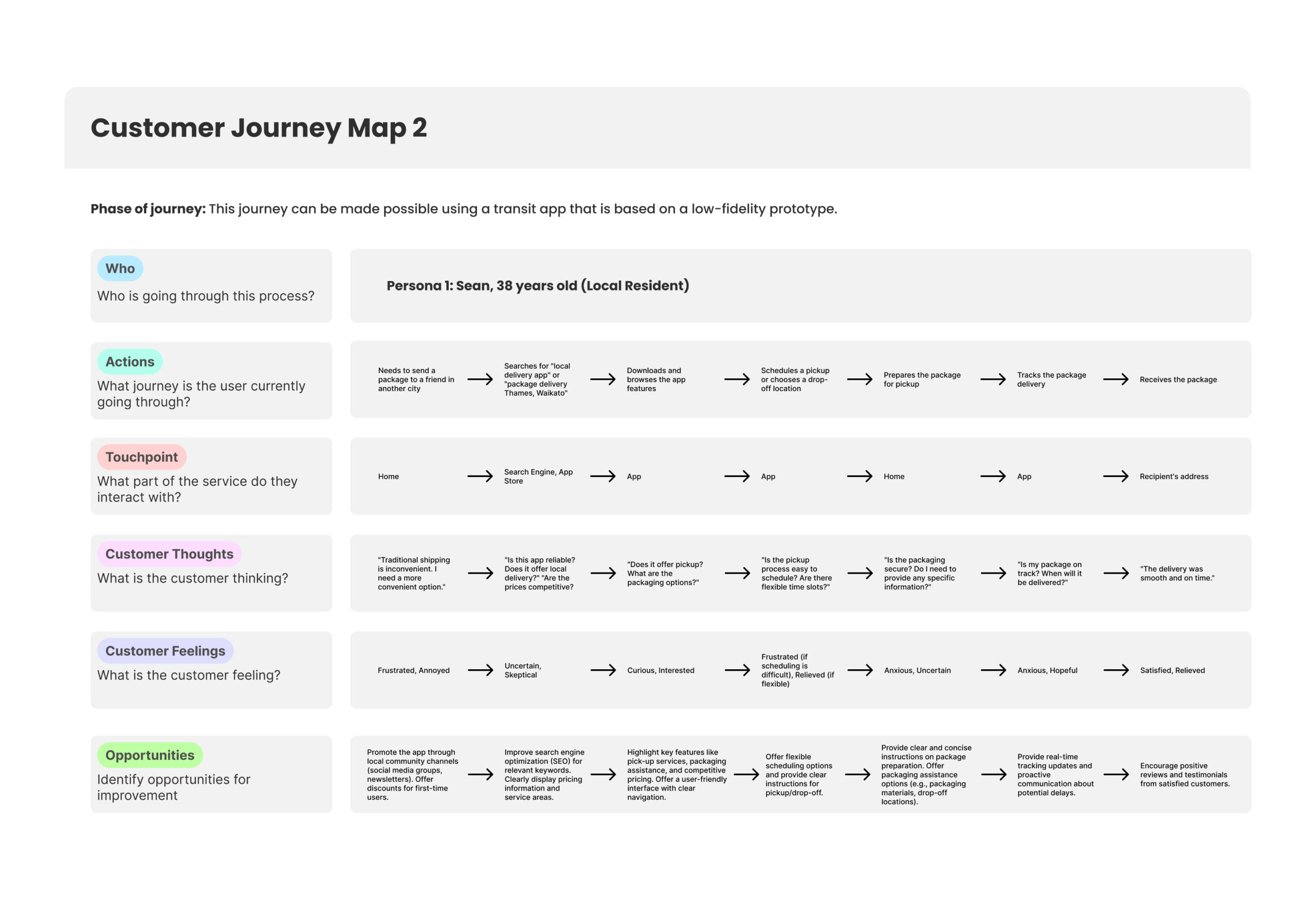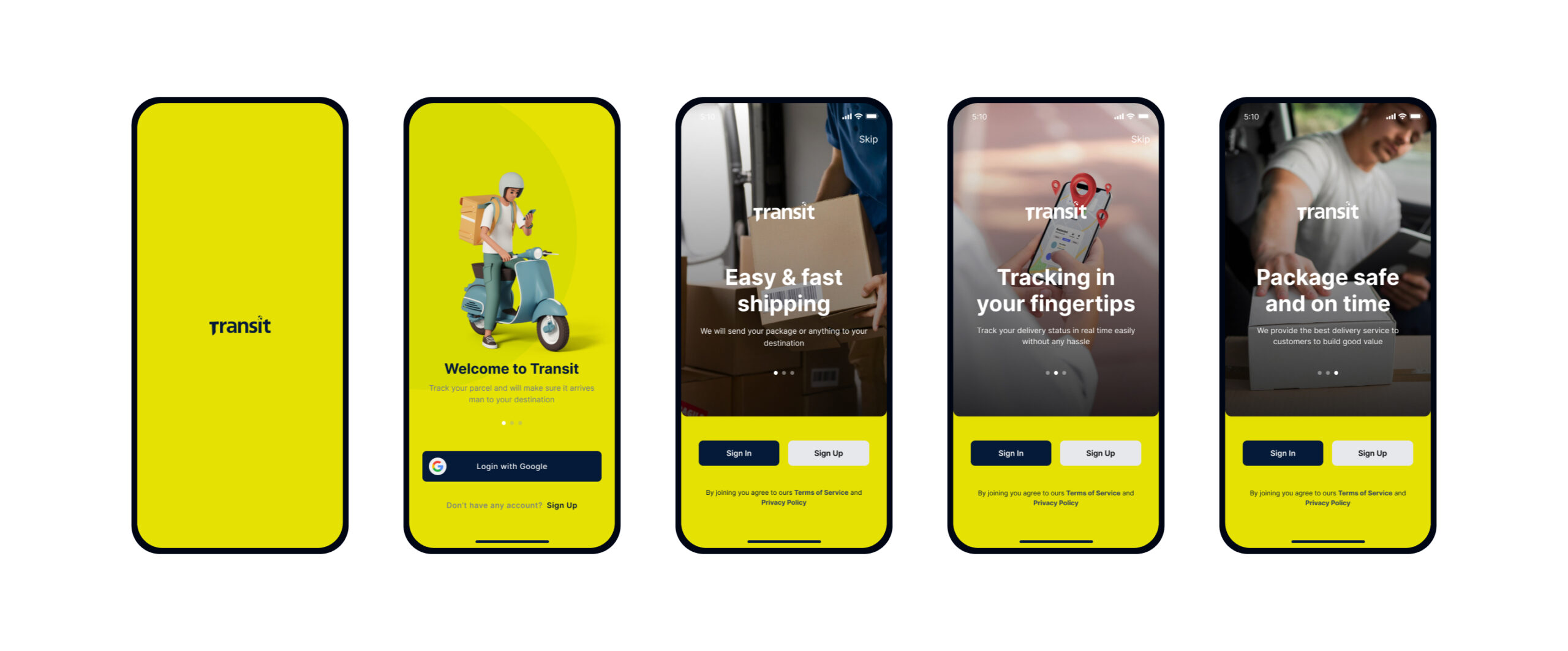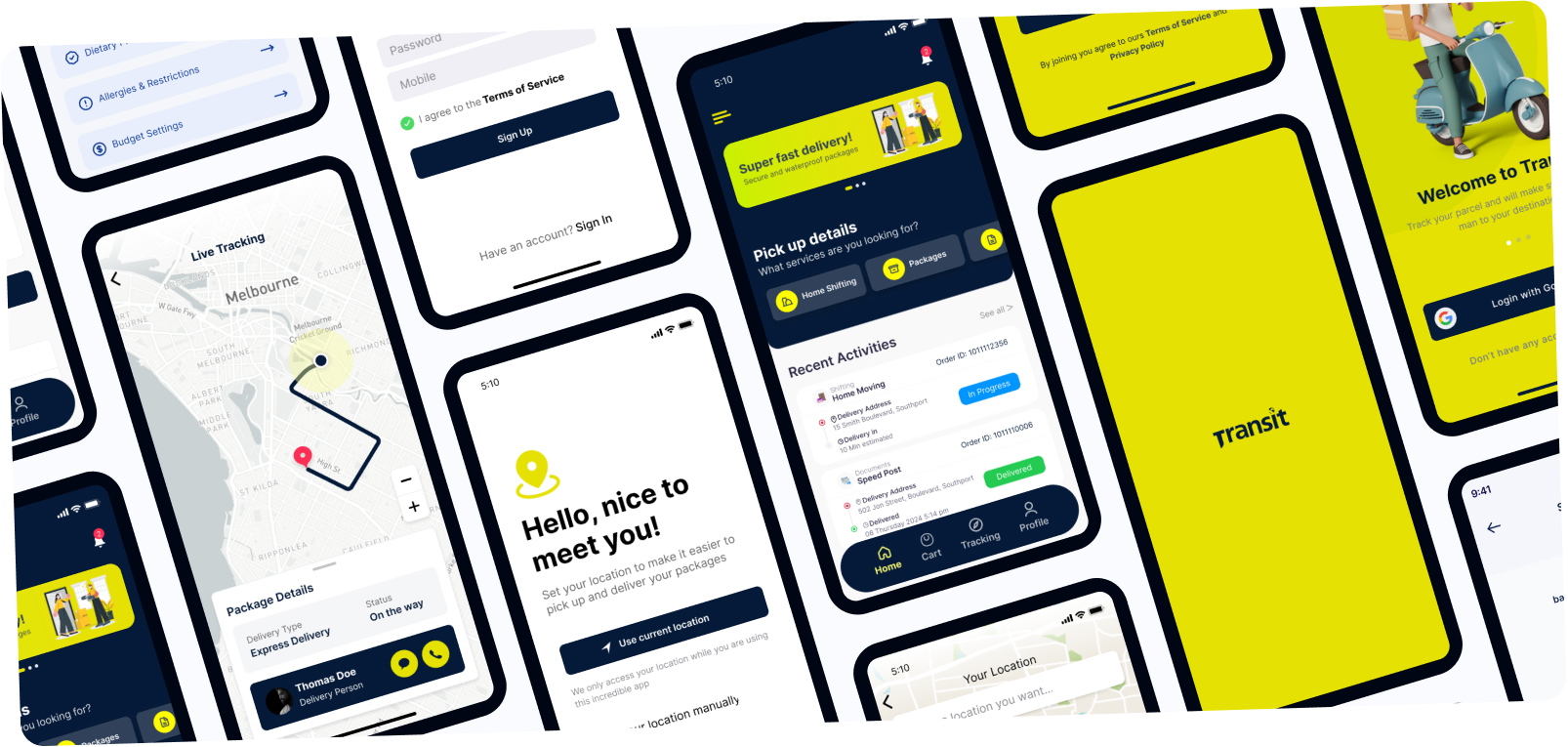Case Study
Transit App Concept
The Product:
The primary goal of my project is to develop a mobile app that simplifies the process of shipping or sending packages for local residents & Tourists
Duration
8 Weeks (project timeline in uni)

The story behind this project
Transit was a project I created during my time at university. After eight years, I found myself reflecting on it and considering how it could be updated. This inspired me to redesign the original shipping and delivery app. At that time, in 2016-2017, New Zealand didn’t have a dependable platform for shipping or sending packages easily. People had to either go to the post office or rely on a handful of outdated websites that focused mainly on B2B shipping. Seeing this as a challenge, I decided to make it my project and collaborated with the Posthaste shipping franchise for my research.

Project Overview
The project is about creating an app that provides a flexible local shipping solution. This app makes it easier for many people to send and receive packages. It is designed for local residents who want a simple way to handle their deliveries, as well as for international tourists who need to send extra luggage or items back home. The app also includes services for moving homes, making it a complete answer for all shipping and transport needs.
The Problem
Many people deal with problems in shipping and logistics because they can’t find reliable services, face high costs, and find it inconvenient. For those living in the area, sending and getting packages can be a hassle because traditional systems are not very efficient. Tourists have a hard time managing extra luggage or items they buy because of airline rules and the challenge of finding cheap shipping options. Additionally, people who are moving homes often struggle to find easy-to-use platforms to set up these services. These issues lead to stress, extra costs, and logistical challenges, showing that there is a need for a better solution.
The Goal
The aim of this project is to create an easy-to-use app that meets the shipping and logistics needs of various users. By combining local package delivery, international shipping for travelers, and home-moving services into one platform, the app will make things easier, lower stress, and provide affordable options. It wants to give users access to efficient and trustworthy services that are customized to fit their individual needs.
My Role
This was an old Uni Term 5 project, which allows me to plan and manage each step of the design thinking process. Therefore, I was Generalist UI/UX designer in this project.
Responsibilities
- Conduct User Research
- Define Problem in ideation phase
- Create Personas, User journey maps
- Flow chart, Wireframes, Digital Wireframes and Lo-Fi Prototype,
- Hi-Fi prototype.
User journey map
This user journey maps gives you a clear view of how customers experience the app at every step. It also highlights important chances to make the app easier to use and boost overall customer happiness.


Look and feel (Old vs New)
This user journey maps gives a clear view of how customers experience the app at every step. It also highlights important chances to make the app easier to use and boost overall customer happiness.
Old UI

New UI

What are the changes
In this project, I made important updates to the old user experience and UI. I began by looking at my earlier research to see what worked well, what users liked, and what issues and limits there were. After that, I considered how I would approach this project if I were starting fresh today.
I redesigned the old user journey, gathering feedback from my friends and the designer community. I also used AI tools, which made things quicker and easier. Since this is just a practice project, I concentrated on looking at all the information I gathered from different sources and used AI to analyze it for better understanding.
With all the information in hand, I envisioned the new design and began sketching wireframes. After finalizing the features, I shared them with my group for feedback and iteration. This approach allowed me to create a much more refined and user-focused design.
New onboarding screens

New login experience

New tracking features
Key screens

UX constraints
This project faces several UX constraints, including catering to diverse user demographics (tourists and locals), addressing payment and currency issues, and ensuring accessibility for all users. Balancing simplicity with multiple functionalities like shipping, luggage handling, and home moving is a challenge, as overloading the UI could overwhelm users.
Logistics, like tracking shipments in real-time and helping with packaging, need to be well thought out to keep users feeling confident and happy. Also, when working on a practice project, I have to depend on guesses and limited input, which can create some missing pieces. Finally, having limited time and resources can affect how to improve things and decide which features are most important.
